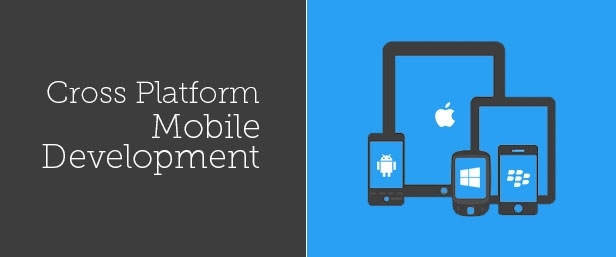6 Reasons To Use Cross-Platform Mobile Development Software
11.11.2015
##Top reasons to use cross platform mobile development software
Cross platform mobile development has become increasingly popular due to the numerous benefits it offers. It is also increasingly becoming an industry-standard best practice to “design once for many”, and there are multiple reasons to use cross platform mobile development for your app.
The evolution of cross platform mobile development marks a significant shift in the app development paradigm. Initially, the industry leaned heavily towards native development, tailored specifically for each platform. However, the tide has turned towards more versatile hybrid and cross-platform methodologies, which allow for a more streamlined and unified coding process. This transition has been propelled by the advent of robust frameworks capable of delivering performance that rivals native applications, effectively blurring the lines between the two approaches. Complementing this technological leap is the burgeoning community and ecosystem that have sprung up around these cross-platform tools. Developers now have access to a wealth of resources, support, and shared knowledge, fostering an environment of continuous improvement and innovation in mobile cross platform development. This collective growth has not only enhanced the frameworks themselves but also expanded the horizons for developers and businesses alike, setting a new standard in the creation of versatile, high-performance mobile applications.
Understanding cross platform mobile development frameworks
Cross platform mobile application development stands as a beacon of efficiency and reach in the app development landscape, primarily due to its ‘Write Once, Run Anywhere’ (WORA) principle. This approach significantly slashes development time and costs by eliminating the need to create separate codebases for different platforms. Developers can write the application’s code once and deploy it across various platforms, such as iOS and Android, without extensive modifications. This uniformity extends beyond just the code; it ensures that users have a consistent experience regardless of the device or platform they use. The interface, functionality, and performance of the app remain uniform, which is crucial for brand consistency and user satisfaction. Furthermore, cross platform mobile development expands an app’s market reach exponentially. By catering to multiple platforms simultaneously, the app gains access to a broader audience through various app stores. This inclusivity maximizes visibility and opens up more opportunities for user acquisition, making cross platform mobile app development an attractive strategy for businesses aiming for a significant impact in the digital marketplace.

6 reasons for cross platform mobile development
Here are 6 critical points on why using cross platform mobile app development software has become an industry best practice.
1. Cost Efficiency
Cross platform mobile development allows you to write and maintain a single codebase that can run on multiple platforms, such as iOS and Android. This reduces development costs significantly, as you don’t need separate teams for each platform. It also lowers ongoing maintenance expenses because updates and bug fixes can be applied universally.
2. Faster Time-To-Market
Developing for multiple platforms simultaneously can dramatically decrease the time it takes to launch your app. You don’t have to start from scratch when moving from one platform to another, as a substantial portion of the codebase can be shared. This speed advantage is crucial for getting your app to market quickly and gaining a competitive edge.
3. Code Reusability
Cross platform mobile development frameworks offer a high degree of code reusability. You can share a significant portion of your codebase across different platforms, which not only simplifies development but also ensures a consistent user experience across all devices.
4. Wider Audience Reach
Cross platform mobile application development allows you to target a larger audience by making your app available on multiple platforms. You can reach both iOS and Android users, potentially expanding your user base and increasing your app’s visibility. This broader reach can be especially advantageous for startups or businesses looking to grow quickly.
5. Easier Maintenance
Having a single codebase means that updates, bug fixes, and feature enhancements can be implemented more efficiently. This simplifies the maintenance process and ensures that all platforms receive consistent improvements simultaneously.
6. Consistent User Experience
Cross platform mobile development frameworks often provide tools and components for creating a consistent user interface and user experience across platforms. This ensures that your app looks and behaves similarly on different devices, enhancing brand consistency.
Cross platform mobile development best practices
To navigate the complexities of mobile cross platform development successfully, it’s essential to embrace a disciplined development process, underpinned by industry best practices. Central to this is the principle of code reusability and management, which advocates for leveraging the same codebase across different platforms, thereby conserving time and resources. Yet, it’s important to approach this with a nuanced understanding of each platform’s unique characteristics, tailoring optimizations to fit those specific contours. Equally critical is the framework’s ability to meld with existing development pipelines, ensuring a seamless transition and synergy with the tools and processes already in place. Moreover, a rigorous testing regimen is indispensable, one that spans all target platforms to guarantee a uniform and high-caliber user experience. By adhering to these guidelines, developers can forge a path to cross platform mobile development that is both efficient and effective, delivering applications that perform reliably and resonate with users across the board.
Top cross platform mobile development frameworks
The landscape of mobile cross platform development is diverse, with several frameworks leading the charge. Here are some of the top frameworks:
Ionic: Combining HTML5, JavaScript, and CSS
- Ionic is renowned for its ability to build interactive, native-like progressive web apps (PWAs).
- It leverages web technologies and a Cordova wrapper for accessing native device features.
- Offers a rich library of front-end building blocks and UI components.
React Native: Bridging JavaScript with Native
- React Native allows for the development of genuine native apps using JavaScript.
- It provides the ability to write modules in native languages like Objective-C, Swift, or Java.
- With a strong backing by Meta and a vast community, it’s a go-to for many developers. More about its business applications can be found at this mobile app development company.
Flutter: Google’s UI Toolkit for Seamless App Experience
- Flutter is Google’s UI toolkit for crafting beautiful, natively compiled applications for mobile, web, and desktop from a single codebase.
- It is known for its fast development cycles, expressive UIs, and native performance.
- As a relatively new player, it has gained popularity for its ease of use and modern approach to UI development.
Xamarin: C# and .Net in Mobile Development
- Xamarin uses C# and .Net to build apps that perform like native apps.
- It allows sharing of up to 90% of code across platforms, significantly reducing development time.
- Its integration with Microsoft Visual Studio makes it a preferred choice for many enterprise-level applications.
NativeScript: Direct Access to Native APIs
- NativeScript offers direct access to all native APIs from JavaScript.
- It is an open-source framework that allows developers to use Angular, Vue.js, TypeScript, or JavaScript to build mobile apps.
- Provides the ability to include native libraries and access native device functionality directly.
Each of these frameworks has its own set of features and benefits, making the choice dependent on the specific needs of the project and the preferences of the development team.
Key considerations when choosing a cross platform mobile development framework
When it comes to selecting the right cross platform mobile application development framework, there are several factors to consider to ensure that your choice aligns with your project’s needs. Here are some key considerations for cross platform mobile app development frameworks:
-
Language and Ecosystem Compatibility: The programming language used by the framework should align with your team’s skills. Additionally, the ecosystem, including libraries and tools, should be robust and well-supported.
-
Community Support and Resources: A strong community can provide support, plugins, and pre-built modules that can accelerate development. Resources like documentation, tutorials, and forums are invaluable for developer productivity.
The future of cross platform mobile development
As the demand for mobile cross platform development grows, so does the need for efficient cross platform app mobile development solutions. While cross-platform mobile development has advantages, it’s essential to consider the specific needs and requirements of your project. Native development may still be preferred for apps with intensive graphics, advanced performance needs, or a strong focus on platform-specific features. Consider your project’s goals, target audience, and technical requirements when making your decision.
We can expect to see more innovations in the cross platform mobile application development space, making it easier for developers to deliver high-quality apps with less effort. DOOR3 will continue to implement cutting edge development technologies to deliver your next project on time and on budget.
Think it might be time to bring in some extra help?
Read these next...

Request a free project quote
We will review your request and provide a project cost assessment within 1 — 2 working days.
Request a free project quote


.png )
